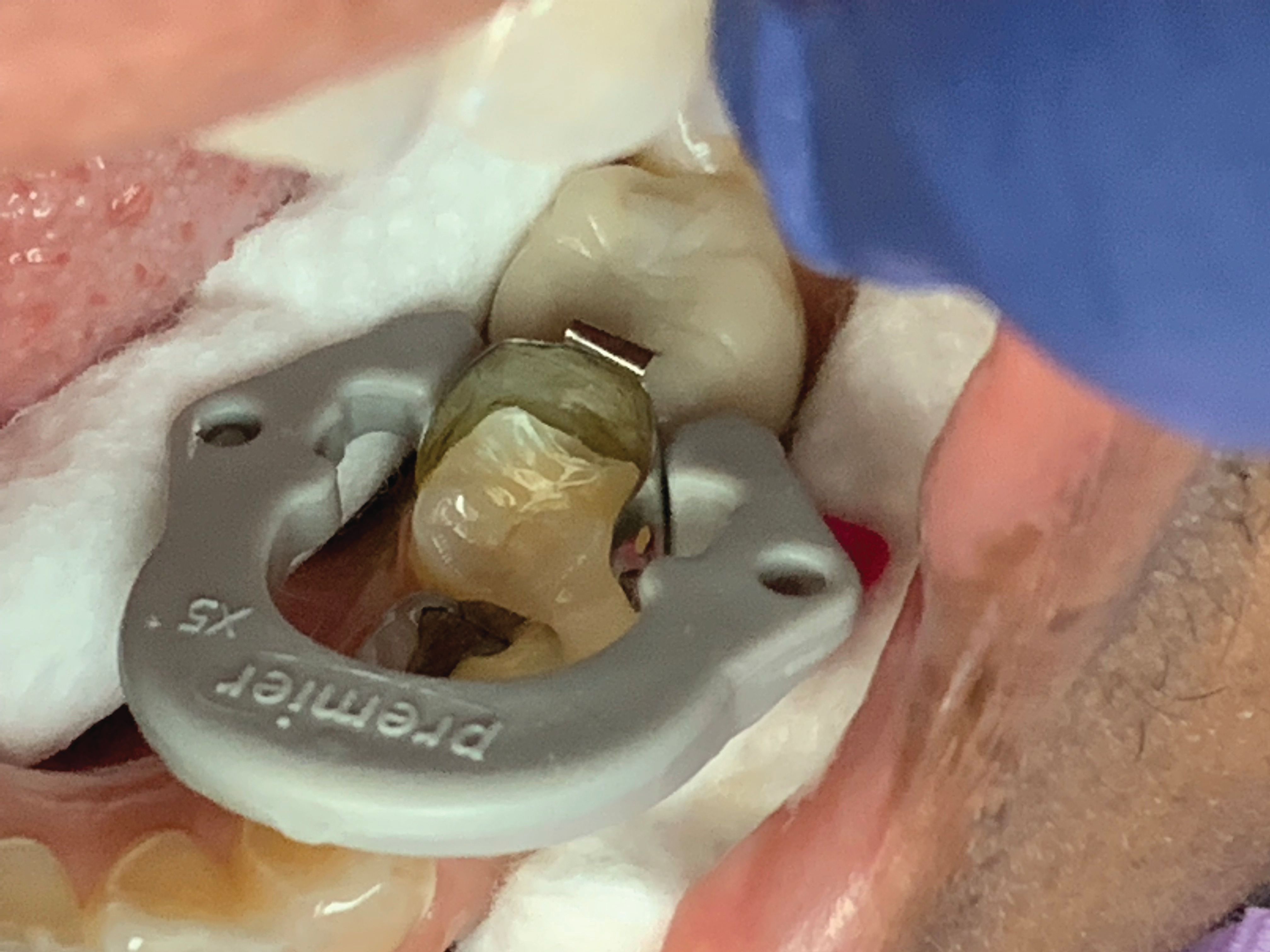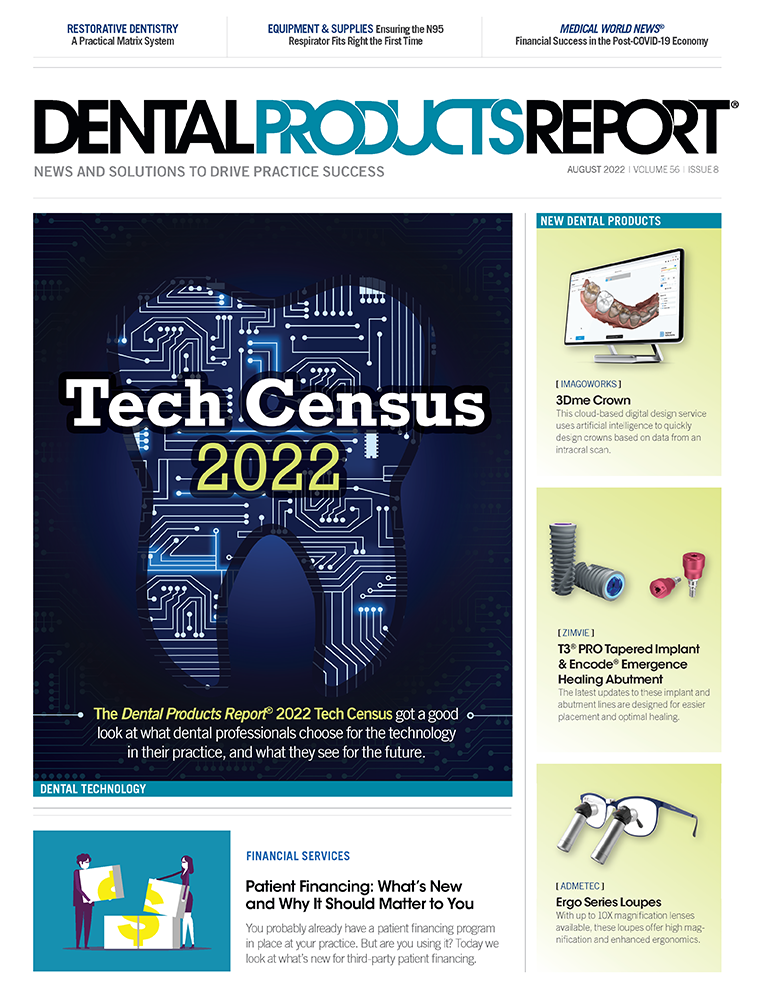Overview
Sectional matrix systems were first introduced to the marketplace more than 30 years ago.1 Since then, numerous innovations and improvements have been made to their rings, bands, and wedges. Changes to the rings involve new design and materials. Originally narrow and fabricated in stainless steel, they are now made of nickel-titanium (NiTi) with silicon and/or plastic tines.
Catapult Education was asked to review the latest entry from Premier Dental Products Co., the X5 Sectional Matrix System™. What makes it unique? Rings in sectional matrix systems separate the teeth and facilitate proper interproximal contact for final restoration.2 Metals (especially NiTi) are used for strength, shape memory, and durability. Premier, however, has taken a novel approach and launched a disposable single-size ring made entirely of a proprietary resin. Tested to deliver separation force comparable to that of NiTi rings, the X5 is designed to be used up to 5 times, then discarded.
The argument for a universal disposable ring may be best explained by considering the drawbacks of NiTi rings. The first is price: NiTi rings cost more than $100 each, compared to $4 for the X5 ring. Another is loss of separation force over time, although metal rings may be “retightened.” In addition, if a busy office with several practitioners has only 1 or 2 NiTi rings, they may not be available when needed. And what about damage or corrosion after many reprocessing cycles or, worst of all, what if an NiTi ring ends up in the trash accidentally? Premier’s ring can be used and discarded without fear of loss or damage. The X5 kit comes with 10 rings, and they can be reordered in bags of 35, potentially keeping all operatories stocked.
The reason for having only one ring is to simplify inventory, and although you’ll need multiple rings when doing quadrant Class IIs, overall inventory is still greatly minimized because Premier Dental’s system is designed so that you can use forceps, sectional matrices, and wedges from another manufacturer.
Unlike with other matrix rings, there is no resin residue buildup on X5 rings owing to their unique material and limited number of uses. The key thing to remember is to keep track of the number of uses—be it by marking the sterilization pouch with the number of times the rings have been used or by notching the ring after each use. The X5 ring will lose some of its separating force after 5 uses/reprocessing cycles, so it is important to follow the manufacturer’s instruction for discarding them.
The Sectional Matrix System comes with 3 sizes of wedges—small (yellow), medium (green), and large (blue)—and 4 sizes of matrices: 3.5 mm, 4.5 mm, 5.5 mm, and 6.5 mm.
Indication: Class II composite restorations
Evaluations
- 95% of evaluators said that they achieved quality contacts with the X5 Sectional Matrix System
- 100% stated that the X5 system is equal to other sectional matrix systems
- 86% answered that they are “very likely” to integrate the X5 Sectional Matrix System into their practice
- 90% liked the wedges, and some wanted a wedge wider than 6.5 mm
- received positively and given Catapult’s Vote of Confidence™
About Catapult
About catapult
Catapult is an organization that consists of more than 50 clinicians spread throughout Canada and the United States. As a company, manufacturers pay a fee for their product to be evaluated and what we deliver are truthful, independent answers from surveys that we develop with them. We have had many products that have either had to be altered before hitting the market or simply never arrived because of our openly honest evaluations. In this way, Catapult assists the manufacturer to avoid potentially releasing a faulty product, or simply a product that needs refinement. Lastly, our clients are omnipresent in the industry, small to large, with no favoritism, simply reviewing the latest products in our practices.
Group Comments
- “Having more rings is the key to most systems. . . . Premier X5 System allows for . . . more rings at a low cost, with the same performance.”
- "It’s a more practical system than other[s] . . . on the market.”
- “You will still need other rings for different clinical situations as there is no perfect, one-size in any system.”
- “These rings, being resin, are a bit thicker, and first use may require a little more force for separation.”
Clinical Case
This case involved tooth #20. The lack of interproximal contact with tooth #20 was causing food impaction and soft tissue irritation.
The goals were to minimally prep the enamel of tooth #20 and create functional distal contact with the adjacent tooth. Once tooth #20 was anesthetized, prepping of the distal marginal ridge, and roughening of the distal surface were completed.
The sectional matrix was placed interproximally and secured with a wedge from another system so that there was no space between the sectional matrix and the marginal floor of the prep.
Using forceps, the matrix ring was placed against the sectional matrix, sealing the axial walls of the prep and creating separation between the teeth. The matrix was then burnished against the adjacent tooth to define the contact area. The combination of wedge, ring, and burnishing creates separation to ensure positive contact between the teeth after restoration.
Because the dentin of #20 was not exposed while prepping, a total-etch technique was used. After 15 seconds of etching, the tooth was rinsed, blotted dry, and isolated. A universal bonding agent was applied for 10 seconds, then air-dried (with air-only syringe) and light-cured for 10 seconds.
A small amount of flowable composite and universal supra-nano composite were placed into the box of tooth #20. After curing the composites and removing the ring, wedge, and matrix, the restoration was adjusted and polished.
References
- Raghu R, Srinivasan R. Optimizing tooth form with direct posterior composite restorations. J Conserv Dent. 2011;14(4):330-336. doi:10.4103/0972-0707.87192
- Keogh TP, Bertolotti RL. Creating tight, anatomically correct interproximal contacts. Dent Clin North Am. 2001;45(1):83-102.


